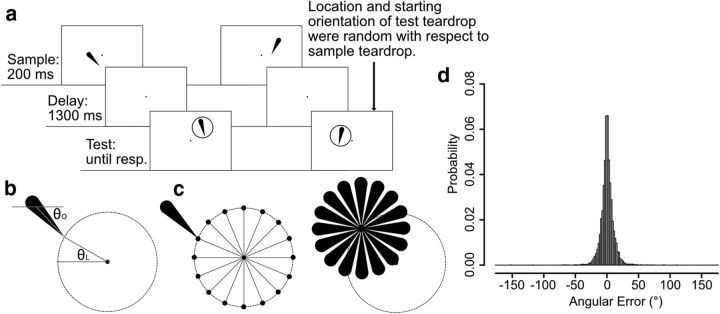Figure 4.
a, Two example trials of the delayed estimation used in Experiment 2: on each trial, participants fixated the central dot for 500 ms (not shown) and then saw a 200 ms teardrop. After a 1300 ms delay period, a second teardrop was presented at a different random location, and the participant used a mouse to adjust this second teardrop's orientation so that it matched the remembered orientation of the first teardrop. b, Definition of θL (the angular location of the teardrop tip) and θO (the orientation of the teardrop): θL was defined by the location (in polar coordinates) of the tip of the teardrop object relative to an invisible circle with a radius of 2.17°, centered on the fixation dot. θO was defined by the orientation of the tip of the teardrop relative to the center of the teardrop. c, Independence of θL and θO. The tip of a teardrop with a given θO could be presented at any of the 16 θL values, and a teardrop with a given θL could have any of the 16 θO values. d, Probability distribution of response errors collapsed across all participants.

